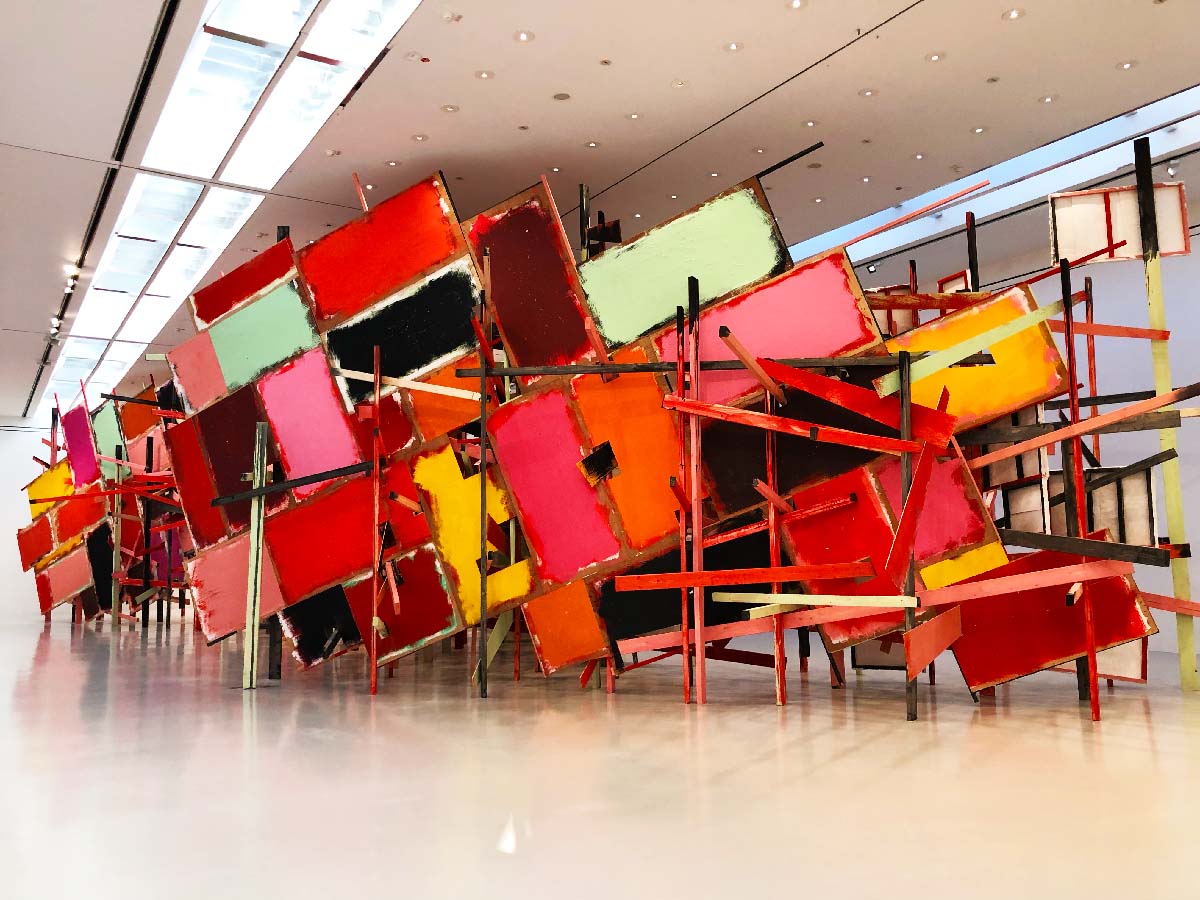
This work was specially made for this space in the Sprengelmuseum Hannover; Phyllida Barlow has always been more concerned with producing things than with displaying them. This is also because it was only quite late that her oeuvre found its way to the frontmost row of attentiveness on the part of the art world. In retrospect, this seems to have given her a freedom which has been maintained in her work right down to the present. Even today, her space-encompassing installations continue to evince the spontaneity of the early installations, with their acts of stacking and layering in gardens and back courtyards, or their inclusion of objects which appear like household companions, then disappear after having been used – on the ironing board, atop the television set, in corridors, and on shelves. Above all during the 1980s, when her five children were a determining and limiting factor in her working rhythm, she developed peculiarities which continue to characterise her production. For example, there were the Nightworks, which Barlow crafted in the dark during hours of nocturnal freedom. The sense of touch, unaided by vision, enhanced the haptic impression and gave predominance to the artist’s feeling her way and trusting her intuition in the process of creation.
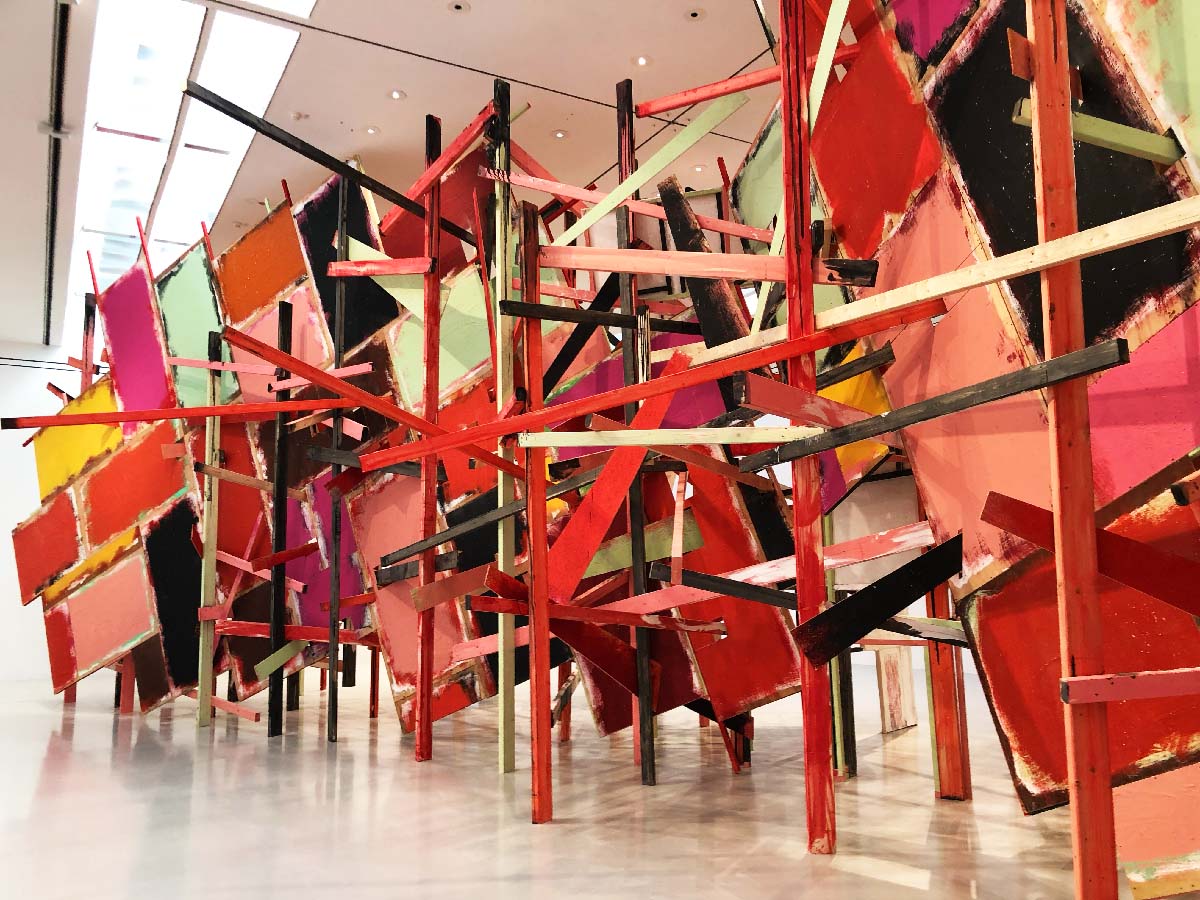
specially made for this space in the Sprengelmuseum Hannover;photo Beatrijs Sterk
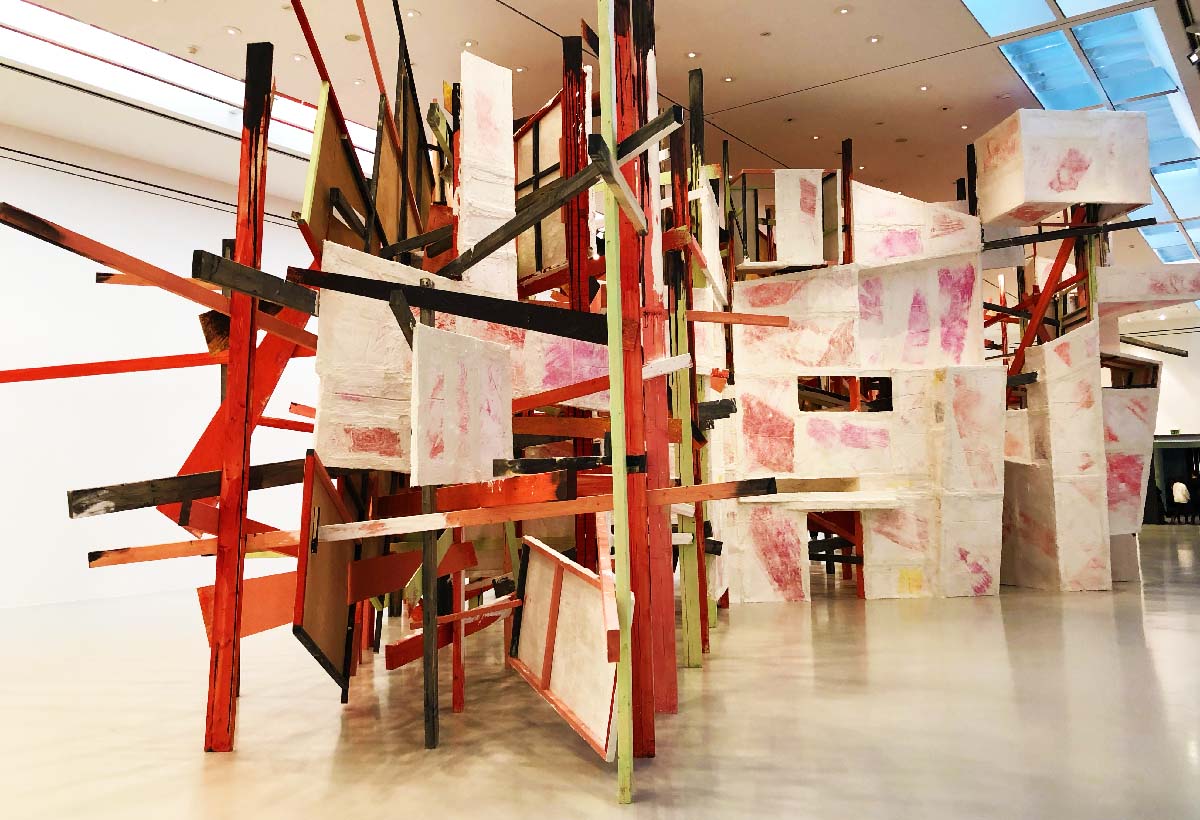
specially made for this space in the Sprengelmuseum Hannover;photo Beatrijs Sterk
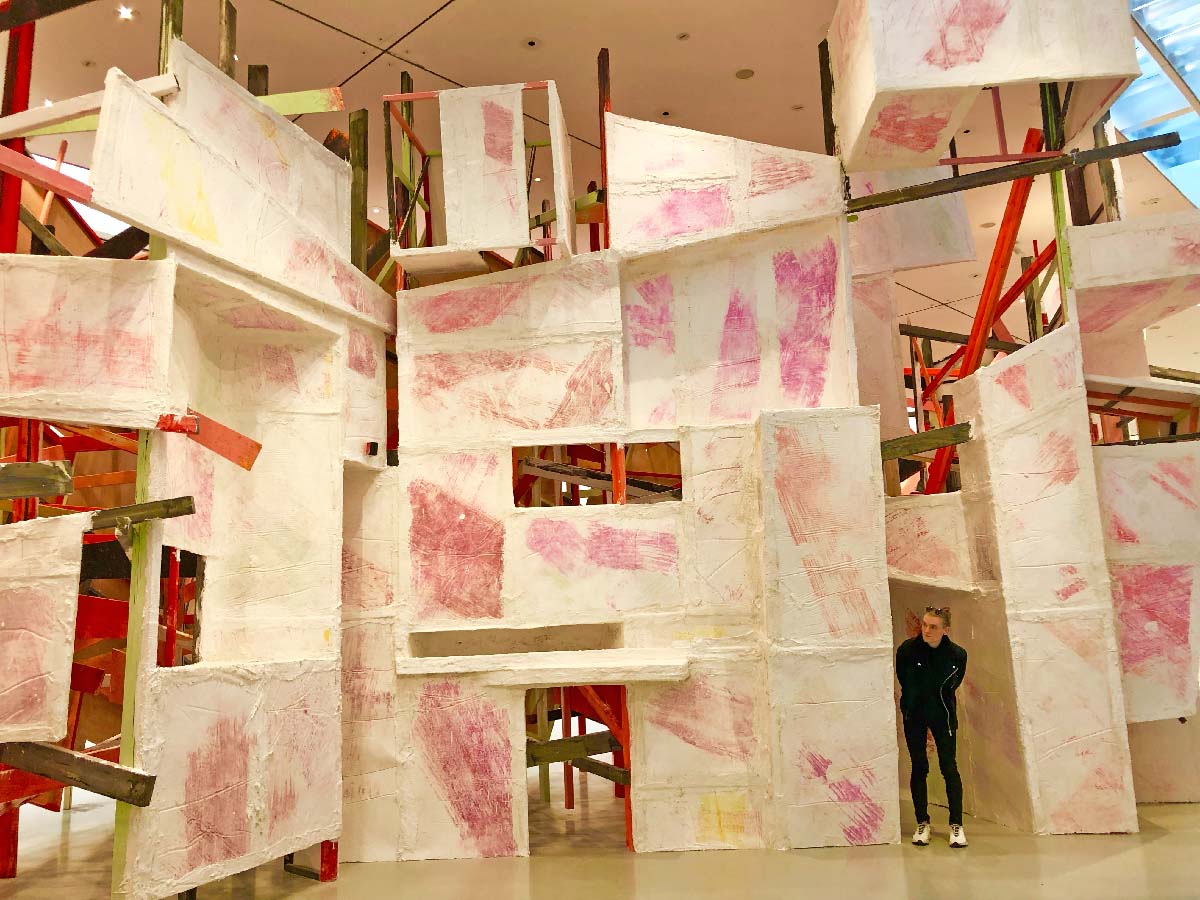
specially made for this space in the Sprengelmuseum Hannover; photo Beatrijs Sterk
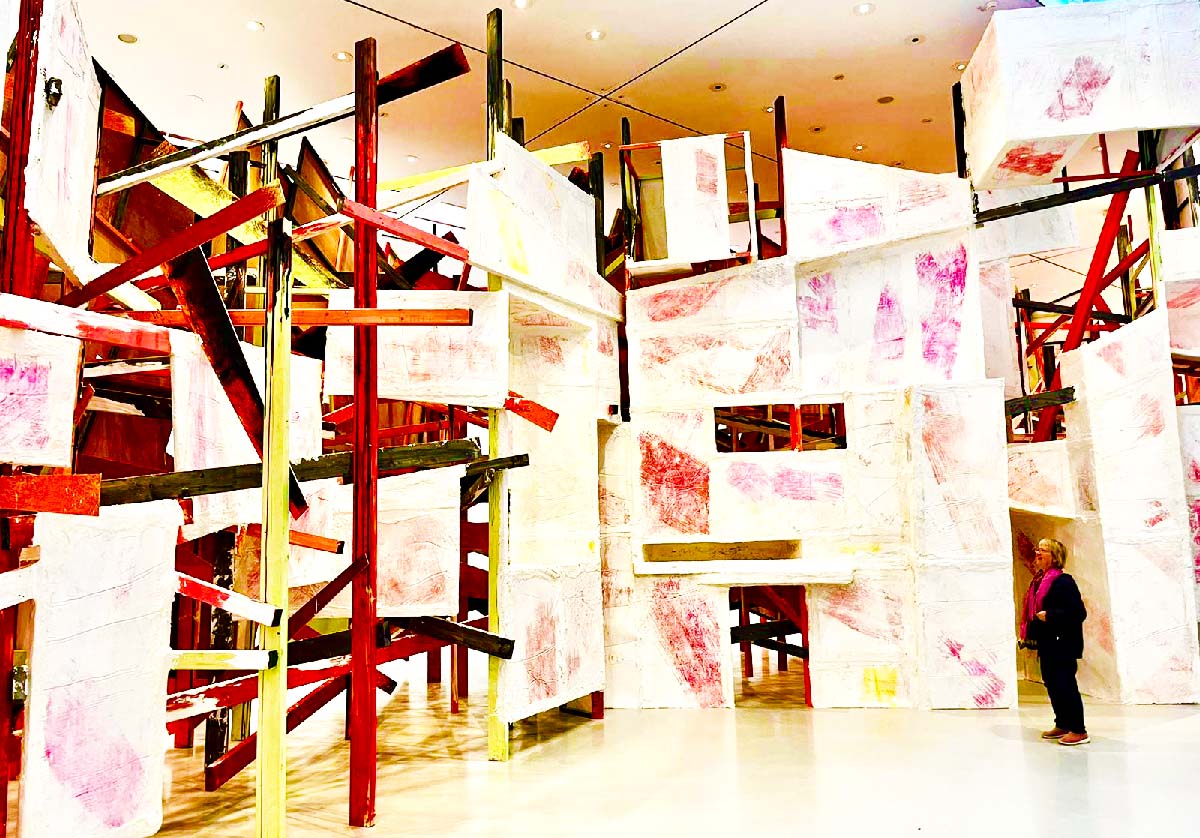
specially made for this space in the Sprengelmuseum Hannover, visitor Beatrijs Sterk, photo Jonatan Jurkowski
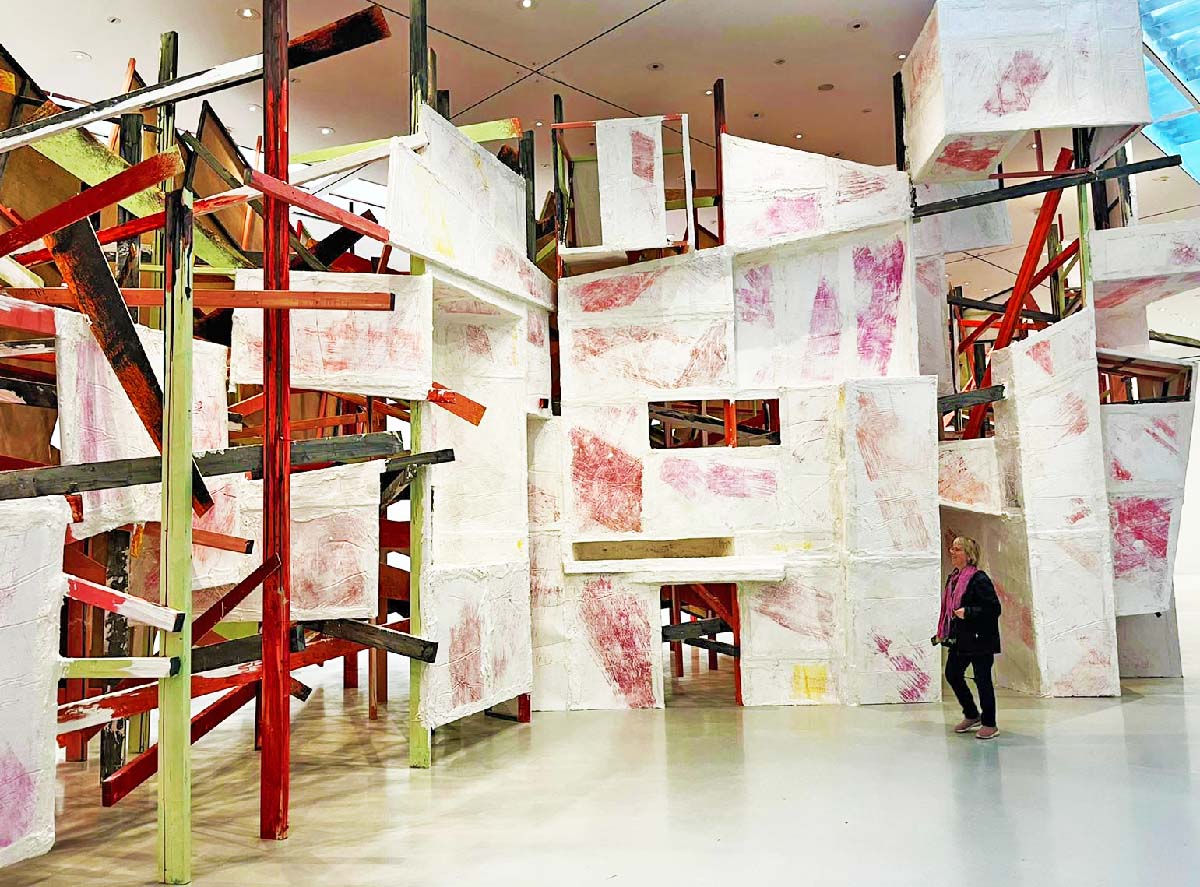
special made for this space in the Sprengelmuseum Hannover, visitor Beatrijs Sterk, photo Jonatan Jurkowski
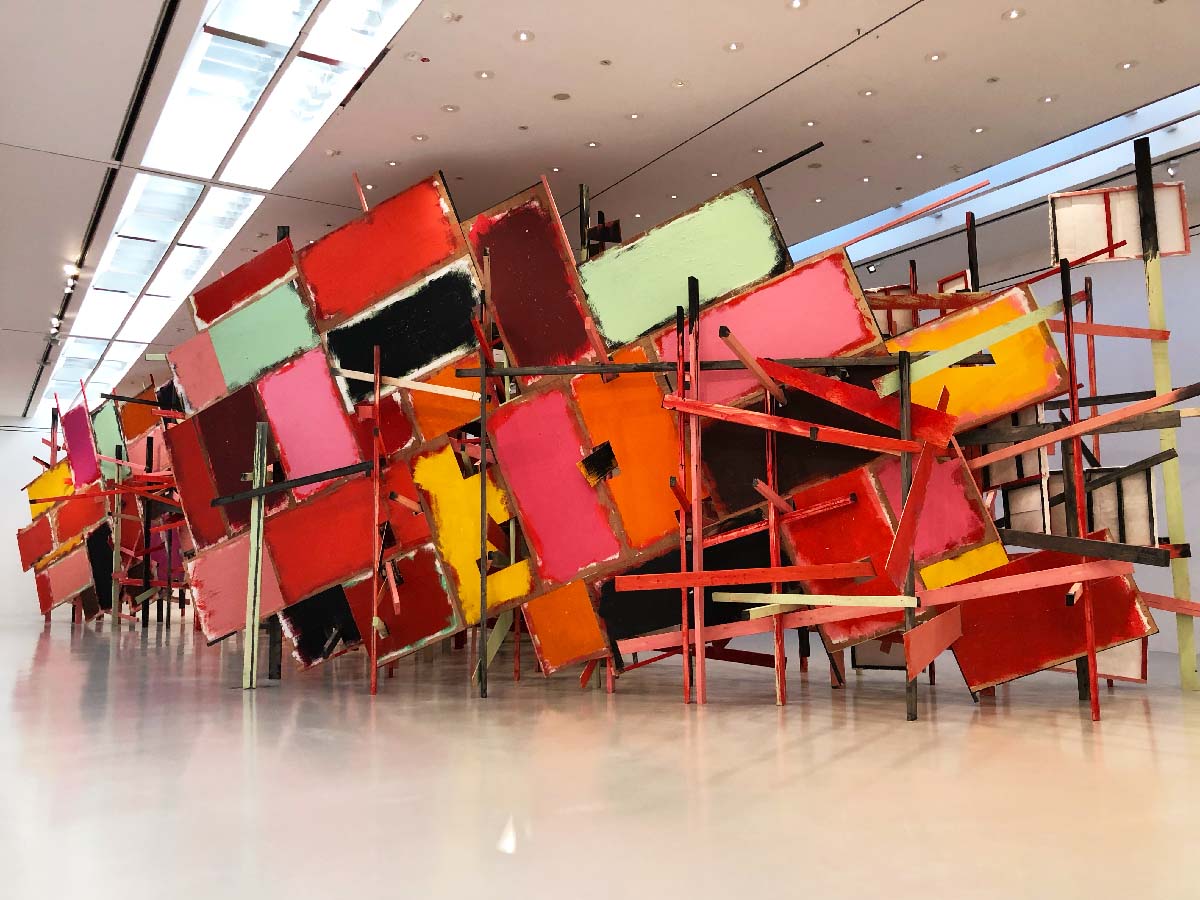
specially made for this space in the Sprengelmuseum Hannover;photo Beatrijs Sterk